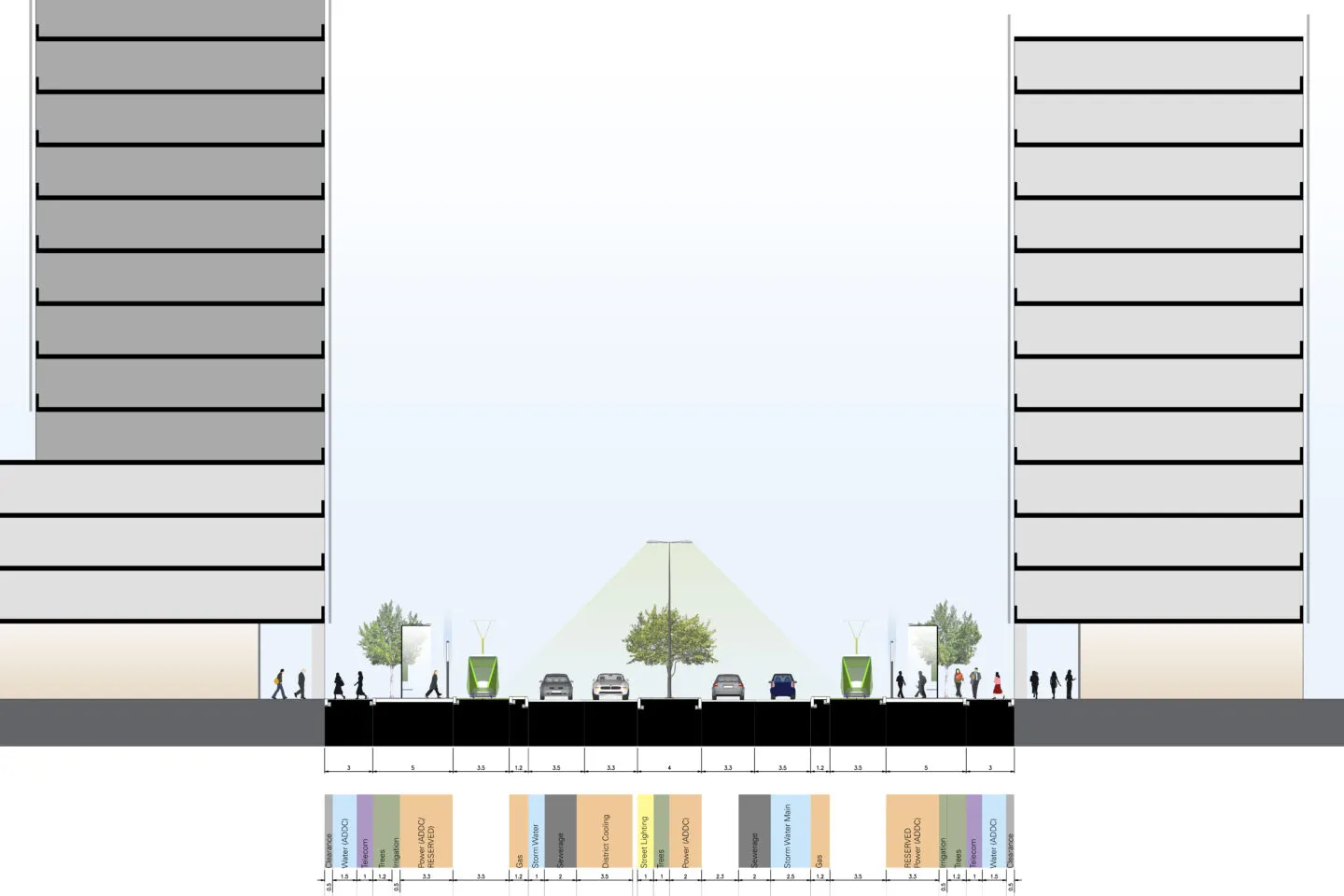Capital City Centre Master Plan
Client
Urban Planning Council of Abu Dhabi
Location
Abu Dhabi, UAE
Guided by the principles of sustainability, SCB put together the City Centre Master Plan, Design Guidelines, and Development Requirements for the Abu Dhabi Capital City District in United Arab Emirates. The SCB team led the master planning effort for Abu Dhabi’s Capital City Centre with a vision based on sound planning and urban design principles, sustainable criteria toward environmental quality, and lower resource consumption, all with the goal of providing the highest quality of life possible.
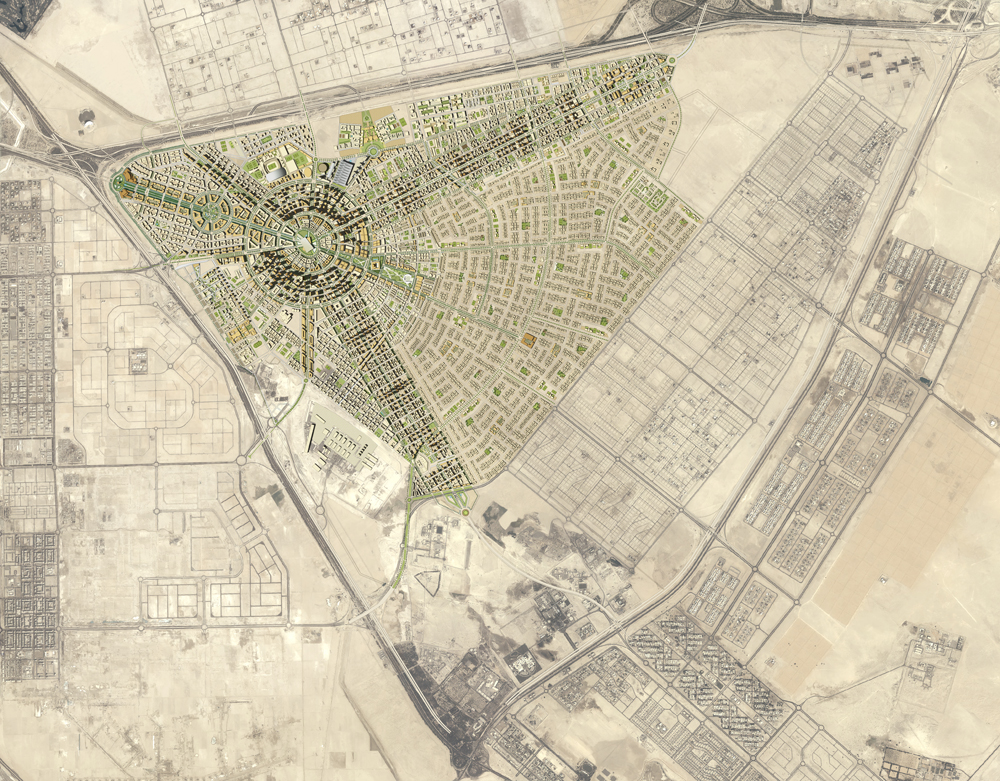
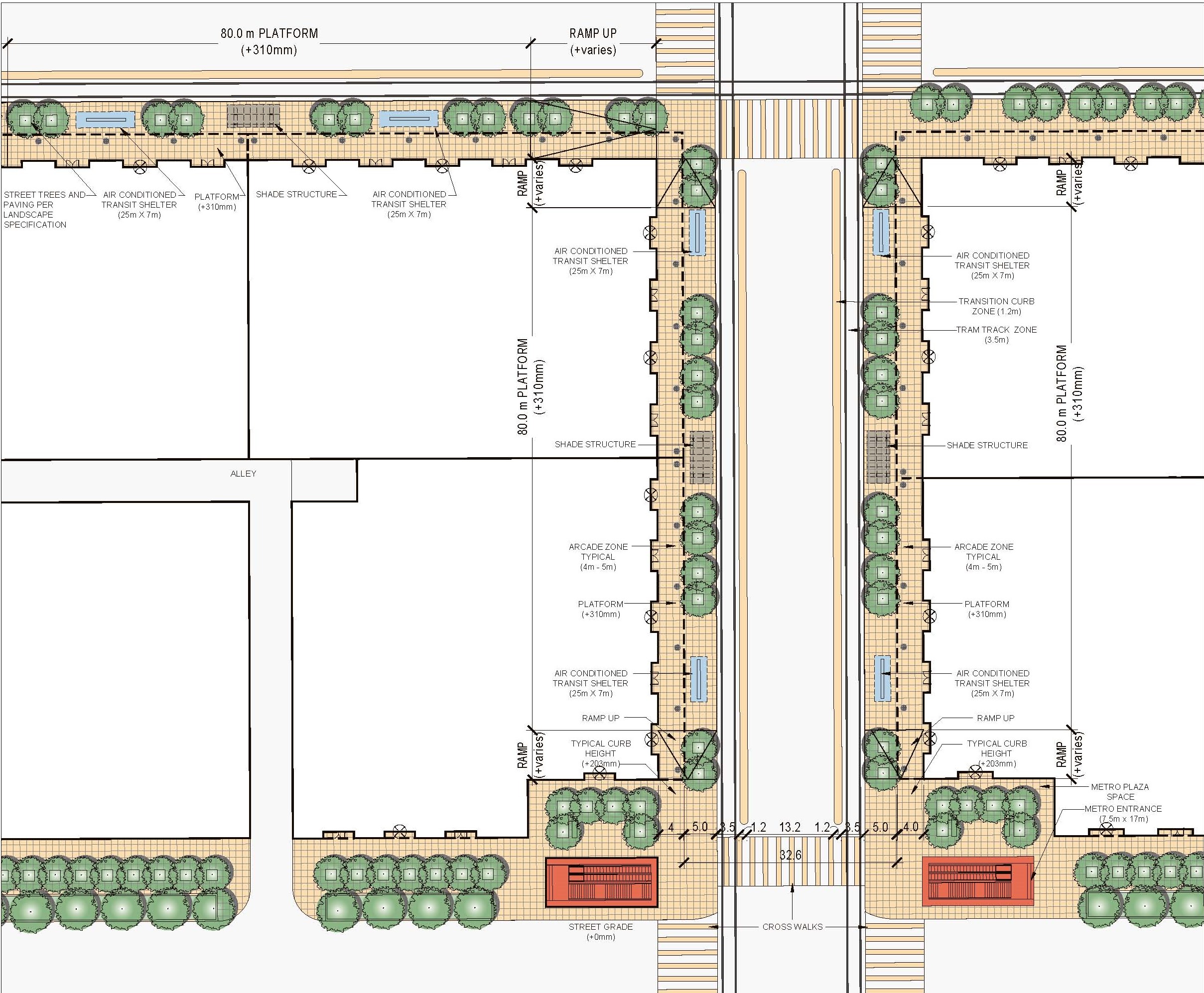
The development of a modern high-density City Centre in the context of a hot and arid desert landscape presents many challenges. Encompassing 1,000 hectares of mixed-used downtown core to support a population of over 200,000 people, the City Centre will accommodate 1.6 million square meters of commercial office space; 700,000 square meters of government office space; 60,000 residential units; 750,000 square meters of hotel; and 450,000 square meters of retail. The distribution of land uses, neighborhood centers, and densities in the master plan is based on a Transit Oriented Development (TOD) model that concentrates a mix of transit-supported land usages and development densities strategically at transit station locations. The Abu Dhabi Regional Transportation Plan has identified a modal split goal of 40 percent of the trip generation to be accommodated by public transportation by 2030 through the implementation of an extensive network of regional rail, metro rail, street trams, and bus systems.
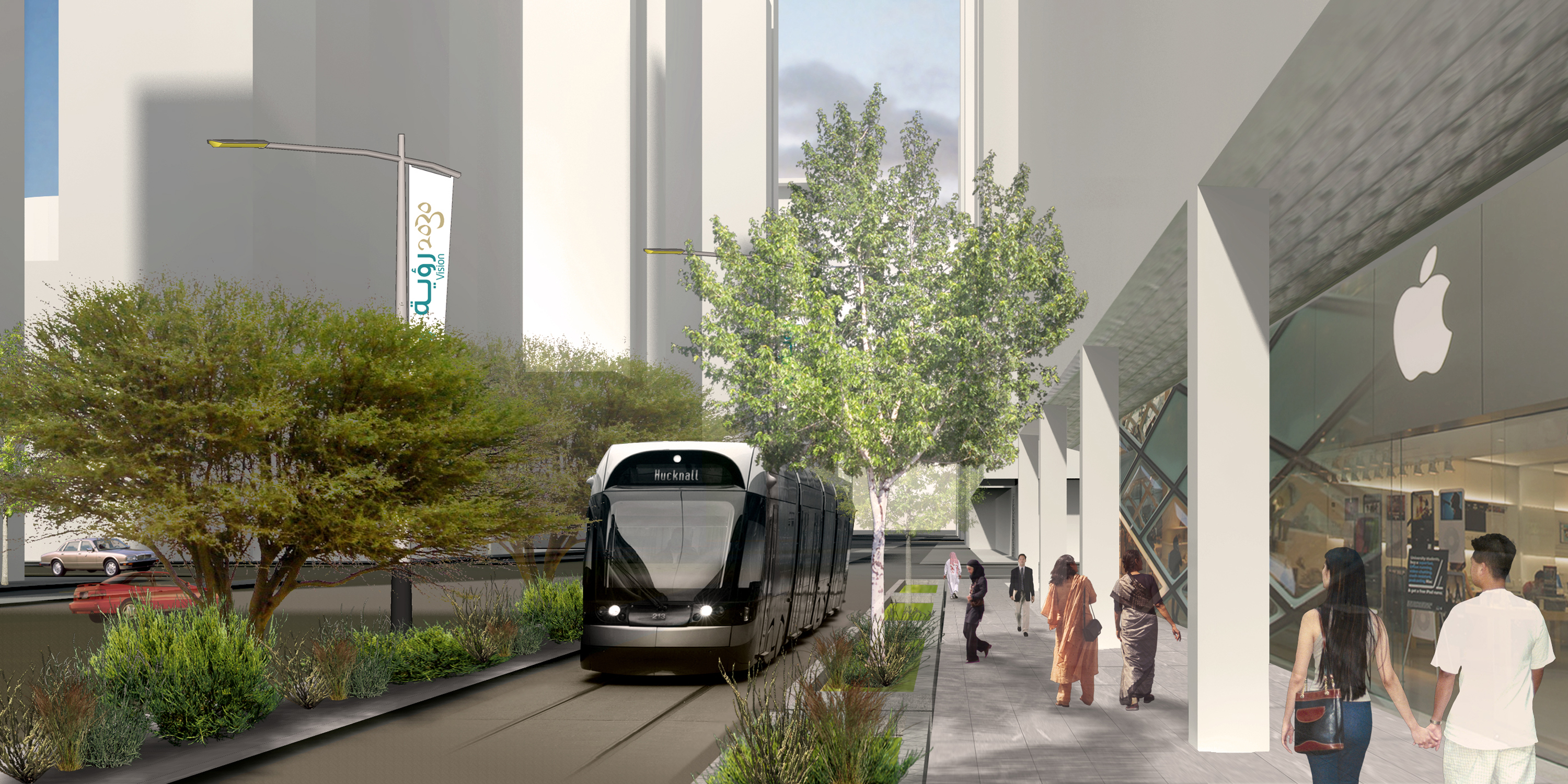
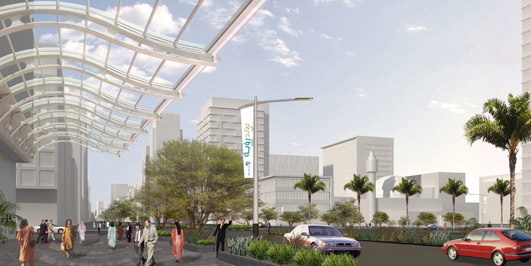
SCB’s guidelines for Abu Dhabi’s new Capital City Centre are based upon a balanced vision of place-making, transit-oriented development, cultural diversity, and cosmopolitan vitality with the functional requirements of modern high-rise districts, extensive transportation infrastructure, and environmental sustainability. In general, the places of commerce and trade in the City Centre are oriented towards the global needs of the modern business world, while the residential neighborhoods are designed around community centers with more traditional gathering places such as local mosques, women and youth centers, libraries, local retail shops, and recreational facilities. Creating and sustaining a livable Arab modern city must be done in support of the various cultures and societal frameworks that are present in Abu Dhabi. The project encompassed eight months of workshops, coordination meetings, and intense creative strategic design planning. All of was this culminated in a two-volume set of documentation. The City Centre Master Plan lays out the framework of urban design and planning principles for the district, and provides guidance for the character of precincts within the plan. The City Centre Development Requirements volume provides more detailed requirements at the plot level, and will become a critical design review management tool. Together, these documents are resources for the guidance of development within the Capital District – City Centre, and will ensure a successful and sustainable future for the urban capital of the UAE.
